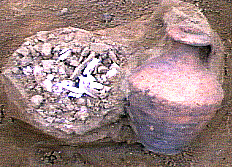
Fig. 5 Simple cremation tomb surrounded by stones. 1st century AD, from Kehlen-Rennpaad
The geographical distribution of the cemeteries indicates internal colonization of the territory of the civitas of the Treviri during the Flavian period. Settlement extends to the climatically less favourable regions with less fertile soils furthest from the administrative and economic centres represented by the vici of Arlon, Mamer, Titelberg and Dalheim.

Fig. 5 Simple cremation tomb surrounded by stones. 1st century AD, from Kehlen-Rennpaad

Fig. 6 Nested bones beside a small jar. 1st half of the 1st century AD, from Kehlen-Rennpaad
Very little is known of the exact relationship between cemeteries and corresponding rural settlements at the currently known sites in the Grand Duchy of Luxembourg. In almost all cases tombs and cemeteries discovered in the country have been attributed to particular rural settlements only on the basis of topographical arguments, the settlements in question being in the main known only from surface finds. So far, unfortunately, we have no example that allows direct comparison between tomb inventories and materials from a corresponding rural settlement.
For the periods covered by our study and contrary to the first few decades of the Roman occupation, one can observe a clear topographical separation of the tombs of the owners of rural domains and the cemeteries of the inhabitants of the pars rustica of the corresponding settlements.
Thus, from the middle of the 1st century, social differentiation expressed in burial customs changes in form; it is now reflected in the topographical separation of the tombs and their external monumental form.
As our knowledge stands at present, funerary monuments in stone erected in the countryside present exactly the same artistic and architectural characteristics as contemporary examples known from the cemeteries of the town of Trier or secondary agglomerations such as Arlon, Mamer or Dalheim. It is interesting to note, however, the clear concentration of funerary inscriptions at cemeteries attached to the secondary agglomerations and their extreme rarity in the countryside proper.
A particular form of monumental tomb, the tumulus, seems to have been preferred in the countryside; of the 29 sites which are known to have had one or more Gallo-Roman tumuli none is situated in the necropolis of a secondary agglomeration or even in its immediate environs. Some tumuli, such as the one at Grevenmacher-Bill adopt a markedly Romanized external appearance with a stone enclosure, a stone coping and even a funeral altar recessed into the external wall.
In the Late Roman period the external appearance of the monumental tomb again changes; there are no longer any tumuli, the last examples of which date from the first half of the 3rd century, but the expression of social hierarchy through burial topography is still maintained. Now, the higher social stratum is buried in stone sarcophagi or in partly underground burial chambers. Where cremation is retained in the 4th century a burial enclosure marks the separation from the less privileged social circles.
We have sufficient data from only a score or so cemeteries to try to draw up even a partial plan. At first sight a study of these few cases gives a conflicting picture; for some cemeteries, the excavation reports indicate a systematic organization of the burial ground, most often in rows parallel to a road running alongside or across the necropolis. But in all such cases the old reports concern sites only partly excavated.
For cremation cemeteries excavated in the fairly recent past, for which we have satisfactory documentation, no special spatial organization could be established (Polfer 1996). In the Septfontaines-Dëckt necropolis for instance, the arrangement of the tombs follows no logical pattern discernible to the modern observer.
So far, no site later than the second half of the 1st century has yielded traces of subdivisions of the burial ground through trenches or ditches although we know of such examples from late La Tène sites and sites of the first half of the 1st century. Instead of accepting this as merely the result of poor conditions of conservation and/or inadequate excavation techniques, we should perhaps relate it to the topographical separation of monumental tombs and simple tombs observable from the middle of the 1st century, discussed above. For early cemeteries it is now clear that it is the so-called "aristocratic" tombs (Metzler 1991 and Metzler 1984) that define the spatial organization of the burial ground.
As far as the above ground indication of simple tombs is concerned, we have at present no direct indication or tangible proof of the existence of wooden funerary monuments (decorated stelae or simple posts). However, the fact that disturbance of earlier tombs by later ones is extremely rare, even in cemeteries occupied for more than two centuries,makes the existence of such visible surface marking highly probable.
© Internet Archaeology
http://intarch.ac.uk/journal/issue4/polfere/7polfere.html
Last updated: Tue Dec 09 1997